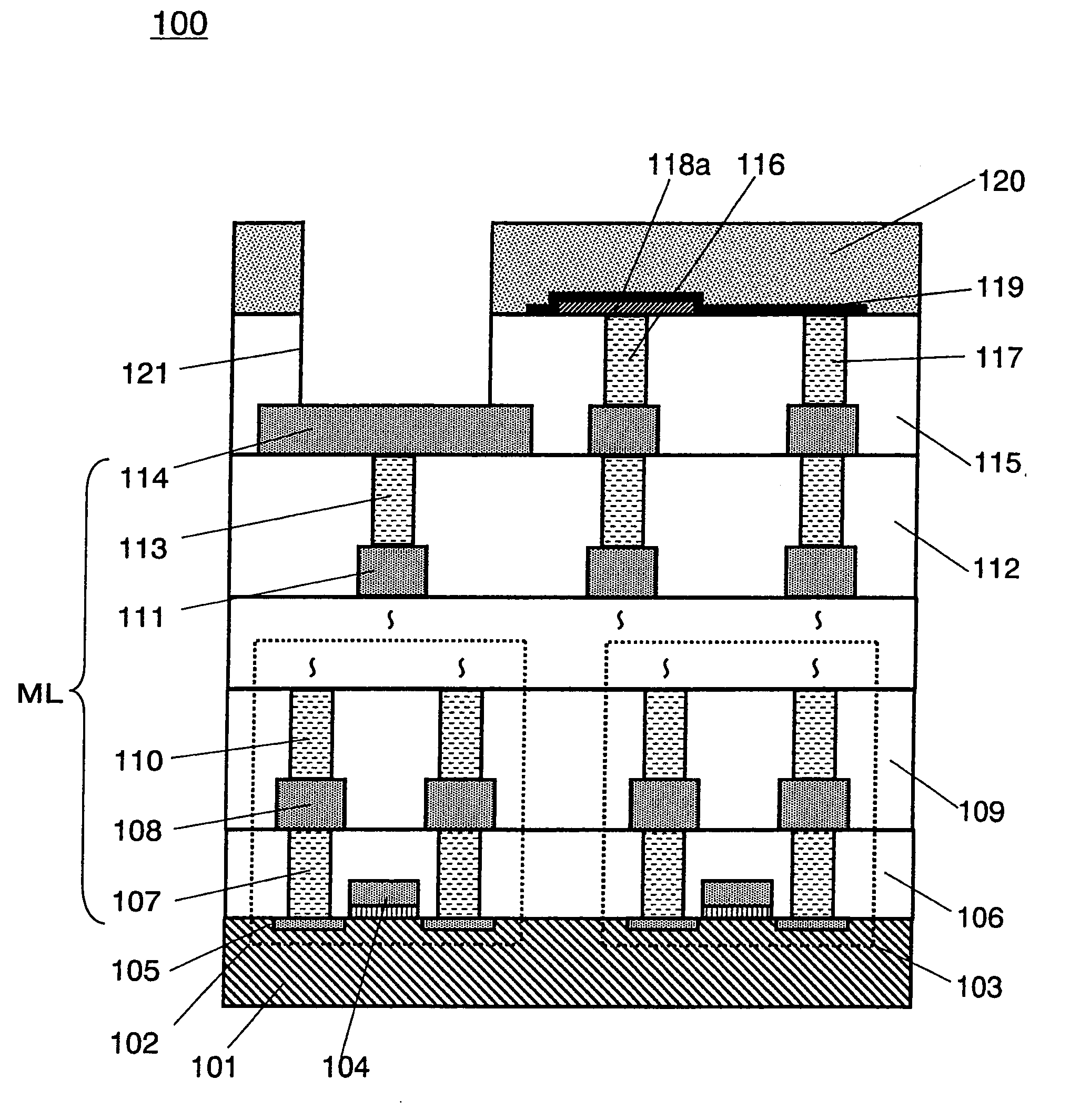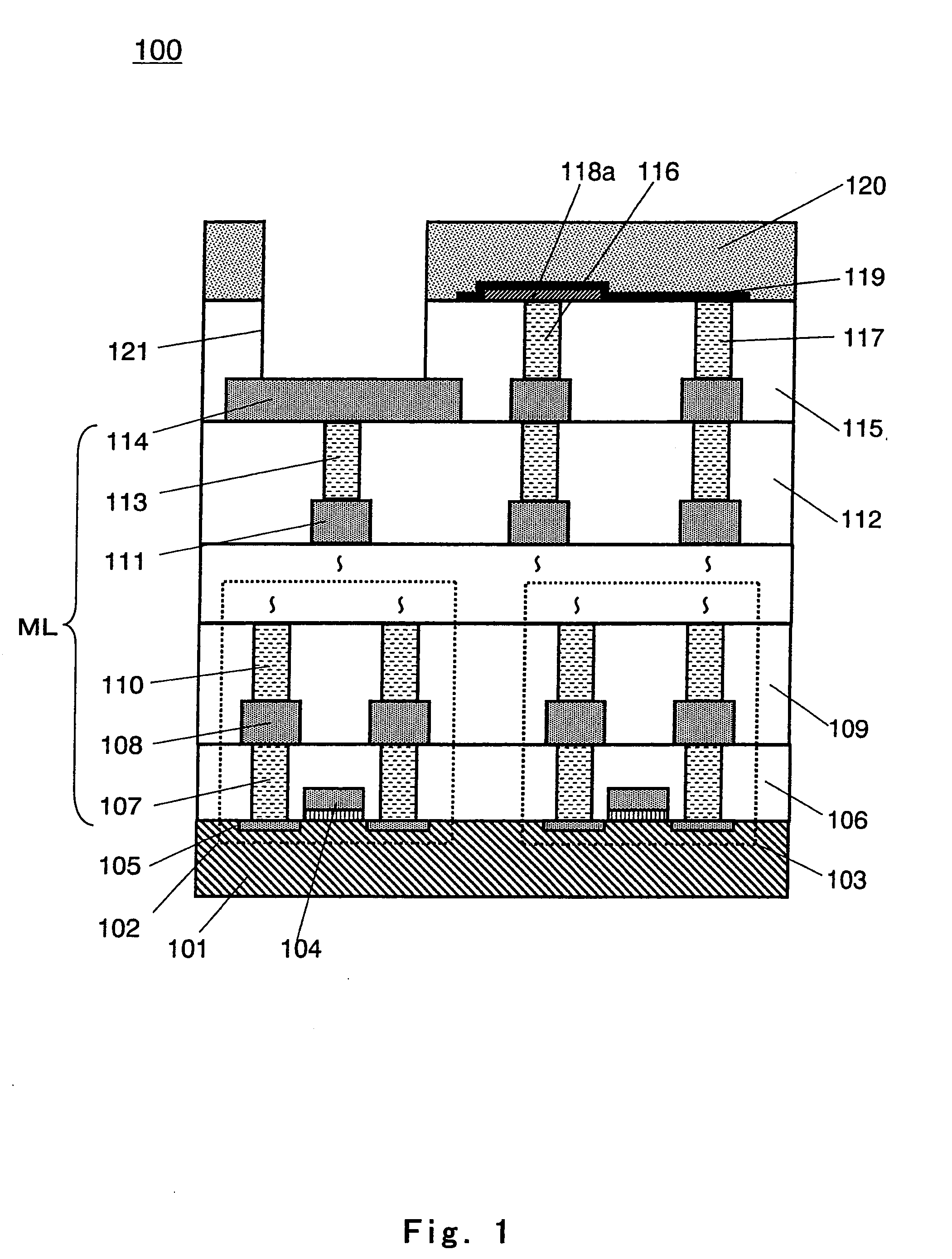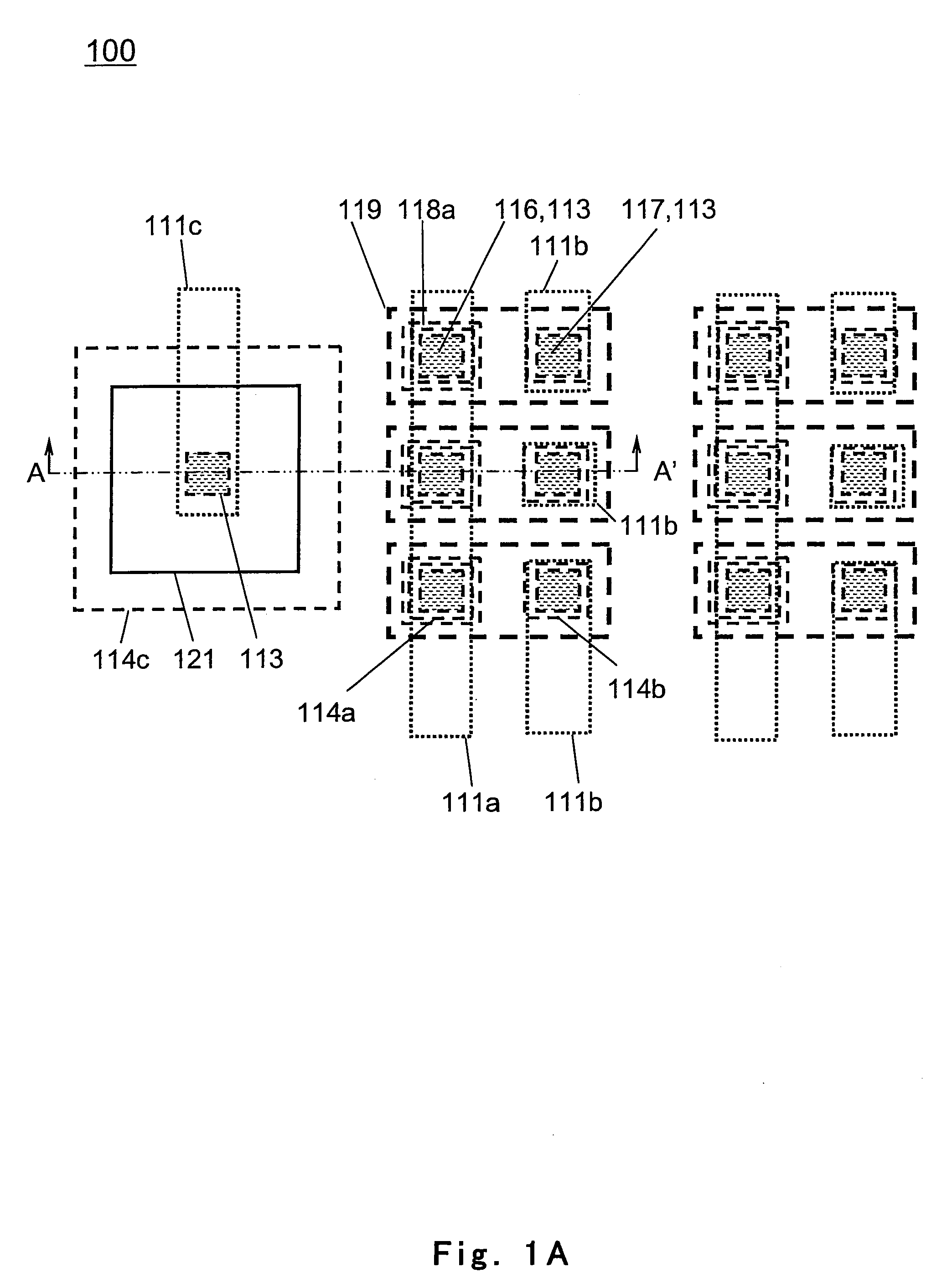Semiconductor device, manufacturing method of semiconductor device, semiconductor chip and system
a semiconductor chip and semiconductor technology, applied in emergency protective devices, bulk negative resistance effect devices, instruments, etc., can solve the problems of low compatibility with other processes and disadvantages in cost performance, and achieve the effect of easy incorporation into various process products
- Summary
- Abstract
- Description
- Claims
- Application Information
AI Technical Summary
Benefits of technology
Problems solved by technology
Method used
Image
Examples
embodiment 1
[0071]FIG. 1 is a cross-sectional view showing an exemplary configuration of a semiconductor device 100 according to Embodiment 1 of the present invention.
[0072]As shown in FIG. 1, the semiconductor device 100 of Embodiment 1 includes a substrate 101 provided with a plurality of transistors each including a gate electrode 104 and a diffusion layer 105, a first interlayer insulating layer 106 formed over the substrate 101 to cover the transistors, and a first contact 107 penetrating the first interlayer insulating layer 106 and electrically connected to the diffusion layer 105 of the transistor, resistively. A first wire 108 is formed on the first interlayer insulating layer 106 to cover the first contact 107. A second interlayer insulating layer 109 is formed over the first interlayer insulating layer 106 to cover the first wire 108. A second contact 110 is formed on the first wire 108 and is electrically connected to an upper wire. On the semiconductor substrate 101, a region corre...
embodiment 2
[0103]FIG. 4 is a cross-sectional view showing an exemplary configuration of a semiconductor device 200 according to Embodiment 2 of the present invention.
[0104]As shown in FIG. 4, in the semiconductor device 200 of Embodiment 2, on the uppermost wire 114, the (n+1)-th interlayer insulating layer 115 is formed, and lower electrode 118b of the resistance variable element and the (n+1)-th contact 117 that penetrate the (n+1)-th interlayer insulating layer 115 and are connected to the uppermost wire 114 are formed. The resistance variable layer 119 is formed on the (n+1)-th interlayer insulating layer 115 to cover the lower electrode 118b and the (n+1)-th contact 117. In this case, the lower electrode 118b serves as the first terminal and the (n+1)-th contact 117 serves as the second terminal. Only the passivation layer 120 is formed to directly cover the entire surface (especially, upper surface of the resistance variable element) including the resistance variable element. The pad hol...
embodiment 3
[0116]FIG. 7 is a cross-sectional view showing an exemplary configuration of a semiconductor device 300 according to Embodiment 3 of the present invention.
[0117]As shown in FIG. 7, the semiconductor device 300 of Embodiment 3 has a configuration in which the (n+1)-th interlayer insulating layer 115 is formed between the uppermost wire 114, and the uppermost wire 114 and the (n+1)-th interlayer insulating layer 115 are substantially equal in height from the semiconductor substrate 101, and form a flat surface. The lower electrode 118c of the resistance variable element is formed to be connected to a part of the uppermost wire 114. The resistance variable layer 119 is formed on the (n+1)-th interlayer insulating layer 115 to cover the lower electrode 118c and a part of the uppermost wire. In this case, the lower electrode 118c serves as the first terminal, while the uppermost wire 114 which is at a different electric potential from the lower electrode 118c serves as the second termina...
PUM
 Login to View More
Login to View More Abstract
Description
Claims
Application Information
 Login to View More
Login to View More - R&D
- Intellectual Property
- Life Sciences
- Materials
- Tech Scout
- Unparalleled Data Quality
- Higher Quality Content
- 60% Fewer Hallucinations
Browse by: Latest US Patents, China's latest patents, Technical Efficacy Thesaurus, Application Domain, Technology Topic, Popular Technical Reports.
© 2025 PatSnap. All rights reserved.Legal|Privacy policy|Modern Slavery Act Transparency Statement|Sitemap|About US| Contact US: help@patsnap.com



